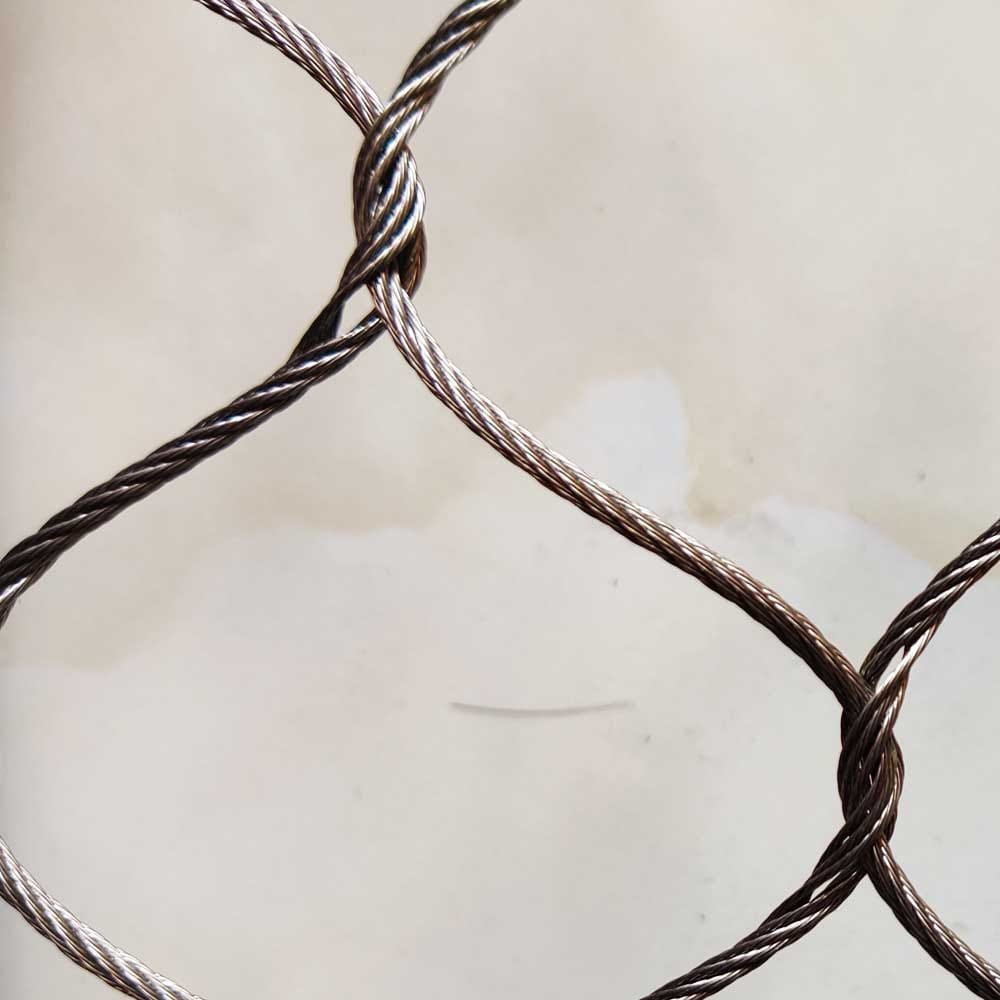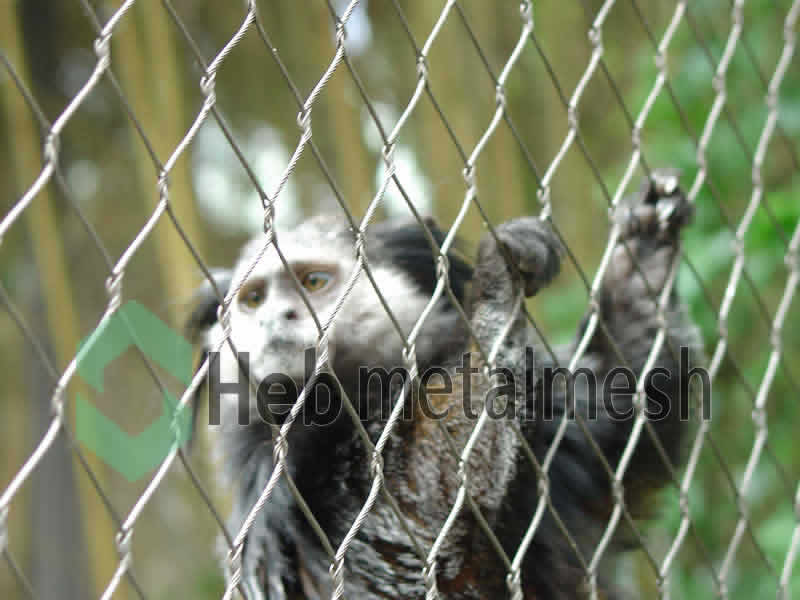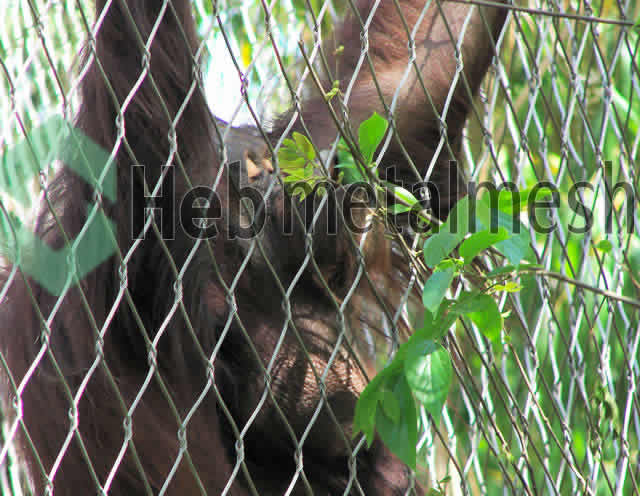Introduction to Animal Barrier Fencing
Animal barrier fencing is a critical solution designed to prevent wildlife and domestic animals from encroaching on specific areas. It serves to protect properties, gardens, livestock, and sensitive ecosystems from potential damage caused by uninvited animals. These barriers can take various forms, including physical fences, natural hedges, or even electronic systems that deter animals effectively. The primary purpose of animal barrier fencing is not only to confine desired animals, such as livestock, within a designated area but also to keep out unwanted wildlife, including deer, rabbits, and other pests. In doing so, these fences play a vital role in promoting sustainable land use and protecting agricultural investments.
Various situations call for the implementation of animal barrier fencing. For instance, farms often utilize these fences to safeguard crops from deer and other foraging animals that can devastate a harvest in a short period. Similarly, residential properties may require fencing to prevent local wildlife from invading gardens, thereby preserving the aesthetic and functional value of the space. In areas where encounters with wild animals are frequent, enhanced barriers can help mitigate risks, such as property damage or the transmission of zoonotic diseases.
Moreover, the importance of animal barrier fencing extends beyond agriculture and property protection. In urban settings, these barriers can help ensure public safety by minimizing interactions between humans and wild animals. Understanding the significance and applications of animal barrier fencing lays the groundwork for exploring specific types, materials, and installation methods that can cater to diverse needs. With the increasing awareness of wildlife conservation and land management, investing in effective animal barrier fencing becomes essential for maintaining a harmonious balance between human activity and animal habitats.
Understanding the Different Types of Animal Barrier Fencing
Animal barrier fencing serves as a crucial means of protecting properties from unwanted wildlife intrusion, as well as safeguarding domestic animals. There are several types of fencing available, each offering distinct advantages and disadvantages based on material, effectiveness, and cost.
Chain link fencing is one of the most commonly used types of animal barriers. It is made from galvanized steel and provides a robust, long-lasting option. Chain link is advantageous due to its durability, low maintenance, and visual permeability, allowing for easy monitoring of both the inside and outside of the enclosure. However, it may not be suitable for smaller animals that can slip through the gaps.
Wooden fences are another popular option, drawn from the appeal of aesthetics and natural appearance. These fences can be tailored to fit various designs and heights, making them versatile for different properties. While wooden fences can provide a solid barrier for many animals, they may require more maintenance, such as painting or sealing, to prevent rot and decay over time. Additionally, they can be susceptible to damage from pests, such as termites.
Plastic fencing offers a lightweight and affordable alternative. Commonly made from PVC, this material resists fading and decay, making it an attractive choice for those seeking a low-maintenance solution. However, while plastic fences may deter some animals, they might not be as effective against larger or more aggressive wildlife.
Electric fencing is often used for livestock and can create an effective barrier against predators. Utilizing a mild electric shock, these fences deter animals without causing serious harm. Although they can be more expensive to install and require maintenance to ensure proper functioning, their effectiveness in providing a secure environment for livestock can make them a worthwhile investment.
Understanding the materials and types of animal barrier fencing is essential for selecting the right solution for your space. Each type has unique attributes that cater to different needs, costs, and preferred aesthetics. It’s crucial to evaluate these factors carefully to implement an effective and suitable fencing solution.
Factors to Consider When Choosing Animal Barrier Fencing
When selecting an effective animal barrier fencing system, several key factors should be carefully considered to ensure optimal protection for your property. The first consideration is the height and design specifications of the fence. Different species of animals are capable of jumping, climbing, or burrowing, and your chosen barrier must be appropriately designed to thwart their efforts. Generally, for larger animals such as deer or goats, a fence height of at least eight feet is advisable, while smaller animals may require shorter barriers. Additionally, the fence’s design should prevent animals from gaining access through the bottom or sides, which often necessitates burying the fence several inches underground or using angled fencing.
Another critical factor is identifying the type of animals that need to be excluded from your space. The characteristics and behaviors of these animals will significantly influence your fencing choice. For instance, if you are primarily concerned about small pests like rabbits or raccoons, a mesh fencing material with small openings may suffice. Conversely, if your property is at risk from larger wildlife, such as bears or wild boar, a more robust structure, perhaps with barbed wire or electric components, may be required.
Local regulations also play a vital role when choosing animal barrier fencing. Many municipalities have laws pertaining to fence height, materials, and placement, which must be adhered to avoid fines or legal issues. It is essential for property owners to consult these regulations before installation. Lastly, the environment in which the fence will be placed is crucial; weather conditions, soil type, and vegetation can all impact the durability and effectiveness of the fencing system. By evaluating these factors meticulously, homeowners and property managers can select the most suited animal barrier fencing to safeguard their properties effectively.
Installation Techniques for Animal Barrier Fencing
Successfully installing animal barrier fencing requires a methodical approach, ensuring that the structure will effectively deter animals while blending harmoniously with the landscape. The first step in the installation process involves surveying the land where the fencing will be erected. This includes assessing the terrain, identifying any underlying vegetation, and noting any potential obstacles that could hinder installation. Understanding your land’s topography will allow for a clearer strategy in selecting the height and type of fencing that would best serve the intended purpose.
After surveying the area, the next step is to accurately measure the perimeter where the fence will be installed. This involves determining the total length of fencing needed and marking the corners and gate locations. It is advisable to use stakes and a string line to maintain straight boundaries, which will not only help in visual reference but also guide the installation process.
Gathering materials is crucial for a smooth installation. The choice of fencing material, such as wood, chain-link, or specialized animal fencing, should consider the size and types of animals you aim to deter. Hardware like fence posts, nails, and staples, along with tools such as a post hole digger and wire cutters, should also be organized beforehand to ensure all necessary items are readily available.
For those considering a DIY approach, careful attention to detail during installation will yield the best results. However, if the project appears daunting or requires specialized skills, hiring professional help may be the best option. Professionals bring experience and expertise that ensure the animal barrier fencing is installed correctly, providing a durable solution to keep unwanted wildlife at bay. Ultimately, selecting the right installation technique will greatly enhance the effectiveness of animal barrier fencing in protecting your space.
Maintenance Tips for Long-Lasting Animal Barrier Fencing
Maintaining animal barrier fencing is crucial to ensure its effectiveness and durability over time. One of the first steps in this maintenance process is conducting regular inspections. It is advisable to check the fencing at least twice a year for any signs of wear, damage, or structural weakness. Look for loose or broken panels, rusting metal, and deteriorating materials. Early identification of these issues allows for timely repairs, which can save both time and resources in the long run.
In addition to inspections, performing timely repairs is essential. If any sections of the animal barrier fencing are found to be compromised, addressing these issues as soon as possible can prevent further damage and ensure that the fence continues to serve its purpose of protecting your space effectively. When making repairs, it is important to use materials that match the existing fence to maintain its integrity and appearance.
Cleaning is another important aspect of maintenance that should not be overlooked. Debris such as leaves, dirt, and plant growth can accumulate along the fencing, which may lead to deterioration over time if not removed. Use a brush or a power washer to keep the barriers clean, taking care to avoid damaging the materials. Regular cleaning helps to enhance the appearance and functionality of the fencing, therefore prolonging its lifespan.
Seasonal preparations are an additional consideration. Before harsh weather conditions, such as winter snow or summer storms, inspect the fencing thoroughly and make any necessary adjustments to ensure it can withstand the elements. Protecting the structure from environmental stressors is key to ensuring your animal barrier fencing remains effective and long-lasting.
In conclusion, by adhering to these maintenance tips—regular inspections, timely repairs, consistent cleaning, and seasonal preparations—you can greatly enhance the longevity and effectiveness of your animal barrier fencing. Taking proactive measures will ensure that your investment continues to protect your space for years to come.
Common Challenges and Solutions in Animal Barrier Fencing
Installing animal barrier fencing can present a variety of challenges, which may affect its overall effectiveness and longevity. One common issue that property owners face is weather-related damage. Severe weather conditions, such as heavy rains, snow, and strong winds, can erode the integrity of the fence material, leading to deformation or even collapse. To mitigate this risk, selecting high-quality, weather-resistant materials for fencing is essential. Regular inspections and maintenance schedules should also be established to identify any early signs of wear or damage.
Another significant concern is breaches by animals. Some animals are adept at digging under or climbing over fences, rendering them ineffective. To combat this challenge, it is advisable to bury the lower portion of the fence at least 12 inches underground or use a fencing design that incorporates an angled barrier. This strategy not only discourages digging but also deters larger animals that might attempt to scale the fence. Furthermore, adding a top rail or barbed wire can provide additional protection against climbing threats.
Vegetation interference is yet another obstacle that can affect animal barrier fencing. Overgrown bushes and shrubs can obscure the fence line, making it easier for animals to find vulnerabilities, while roots can displace fence posts. Regularly trimming vegetation around the recreational area is crucial to ensuring that the fence remains visible and effective. Additionally, installing a weed barrier fabric can help manage plant growth and preserve the fence line’s integrity.
In essence, while numerous challenges can arise when installing and maintaining animal barrier fencing, implementing practical solutions can help reinforce its functionality. By addressing these issues proactively, property owners can enhance their fencing’s longevity and effectiveness, ensuring their spaces remain protected from unwanted wildlife intrusion.
Legal Considerations Surrounding Animal Barrier Fencing
When planning and installing animal barrier fencing, it is crucial to be aware of the legal parameters that govern such actions. Local zoning laws often dictate the types and heights of fences that can be constructed. These regulations can vary significantly from one municipality to another, so it is imperative to consult the specific codes applicable to your area before proceeding. Ensuring that your fencing complies with these laws not only helps avoid potential fines but also maintains neighborhood harmony.
In addition to zoning regulations, property lines play a crucial role in the legality of animal barrier fencing. Before establishing a fence, it is prudent to have the boundaries of your property clearly marked. This can prevent disputes with neighbors regarding encroachments, which could lead to legal challenges. Fences that are placed too close to a property line may be subject to removal if found to infringe upon adjoining properties, thus disrupting your plans for securing your space.
Another important aspect to consider is local wildlife protection regulations. Certain regions have laws that protect specific animal species, and any fencing designed to contain or deter wildlife must adhere to these protections. For example, if your property is located in areas inhabited by endangered species, additional considerations may apply to your animal barrier fencing. Consulting with local wildlife authorities can provide guidance on how to build effective barriers that do not violate these statutes.
In summary, navigating the legalities of animal barrier fencing involves understanding zoning regulations, accurately defining property lines, and adhering to wildlife protection laws. By being proactive in these areas, you can ensure a lawful and effective solution for safeguarding your property against unwanted animal intrusions.
Case Studies: Success Stories Using Animal Barrier Fencing
Animal barrier fencing has proven successful in numerous real-life scenarios, demonstrating its efficacy in safeguarding properties from wildlife intrusions. One particularly impactful case involved a small vineyard located in California’s wine country. The vineyard, vulnerable to deer and other foraging animals, implemented a high-quality animal barrier fencing solution around its perimeter. Within months, the number of deer sightings decreased significantly, leading to a marked increase in grape yields. The owners reported not only enhanced crop protection but also a reduction in associated pest management costs, marking the fencing as a valuable investment.
In another instance, a community garden in an urban area faced challenges with raccoons and rabbits that threatened their vegetable crops. After experimenting with various deterrents, the gardeners decided to install a durable animal barrier fencing system. This involved a combination of woven wire and wooden posts, creating an effective barrier that could withstand the whims of urban wildlife. Following the installation, the raccoon raids ceased almost immediately, allowing the gardeners to enjoy a bountiful harvest throughout the growing season. As testament to its success, the community garden became a case study for urban agricultural initiatives looking to protect their produce.
Furthermore, a residential property situated near a wooded area faced recurrent issues with coyotes encroaching into their yard. The homeowners opted for a tall animal barrier fencing, designed specifically to deter larger predators. Not only did the fence provide peace of mind, but it also enhanced the home’s aesthetic value. With the installation of this fencing system, the family has reported a drastic reduction in coyote sightings, allowing them to enjoy their outdoor spaces without fear for their pets and children. These success stories highlight the versatility and effectiveness of animal barrier fencing across various contexts, illustrating its role as a practical solution for protecting valuable spaces.
Conclusion: Making the Right Choice for Animal Barrier Fencing
In any property management strategy, choosing the appropriate animal barrier fencing is crucial in preventing wildlife or domestic animals from causing damage or disruption. As highlighted throughout this guide, selecting the right type of fencing not only protects gardens and landscapes but also ensures the safety of both animals and humans. Various factors must be considered when evaluating different options. These include the design of the fencing, the materials used, and the specific types of animals one aims to keep at bay.
Moreover, proper installation and regular maintenance of the animal barrier fencing are equally important to guarantee its effectiveness. An inadequately installed fence may offer subtle but significant vulnerabilities, allowing animals to breach the barrier easily. Periodic inspections can prevent potential issues, ensuring that the fencing achieves its purpose over time. Therefore, it is recommended that property owners familiarize themselves with the strengths and weaknesses of each fencing option available in the market, tailoring their choice to the unique landscape and wildlife of their area.
In summary, the journey to safeguarding your property from unwanted animals begins with informed decision-making regarding animal barrier fencing. Whether it is for securing a garden, protecting crops, or ensuring the safety of pets, taking the time to research available fencing solutions is essential. Adopting a proactive stance creates a sustainable approach to these challenges. For further information, consider consulting with professionals in the field or referencing detailed resources that can provide insights tailored to your specific needs. By doing so, you not only invest in the aesthetics of your property but also in its longevity and well-being.


